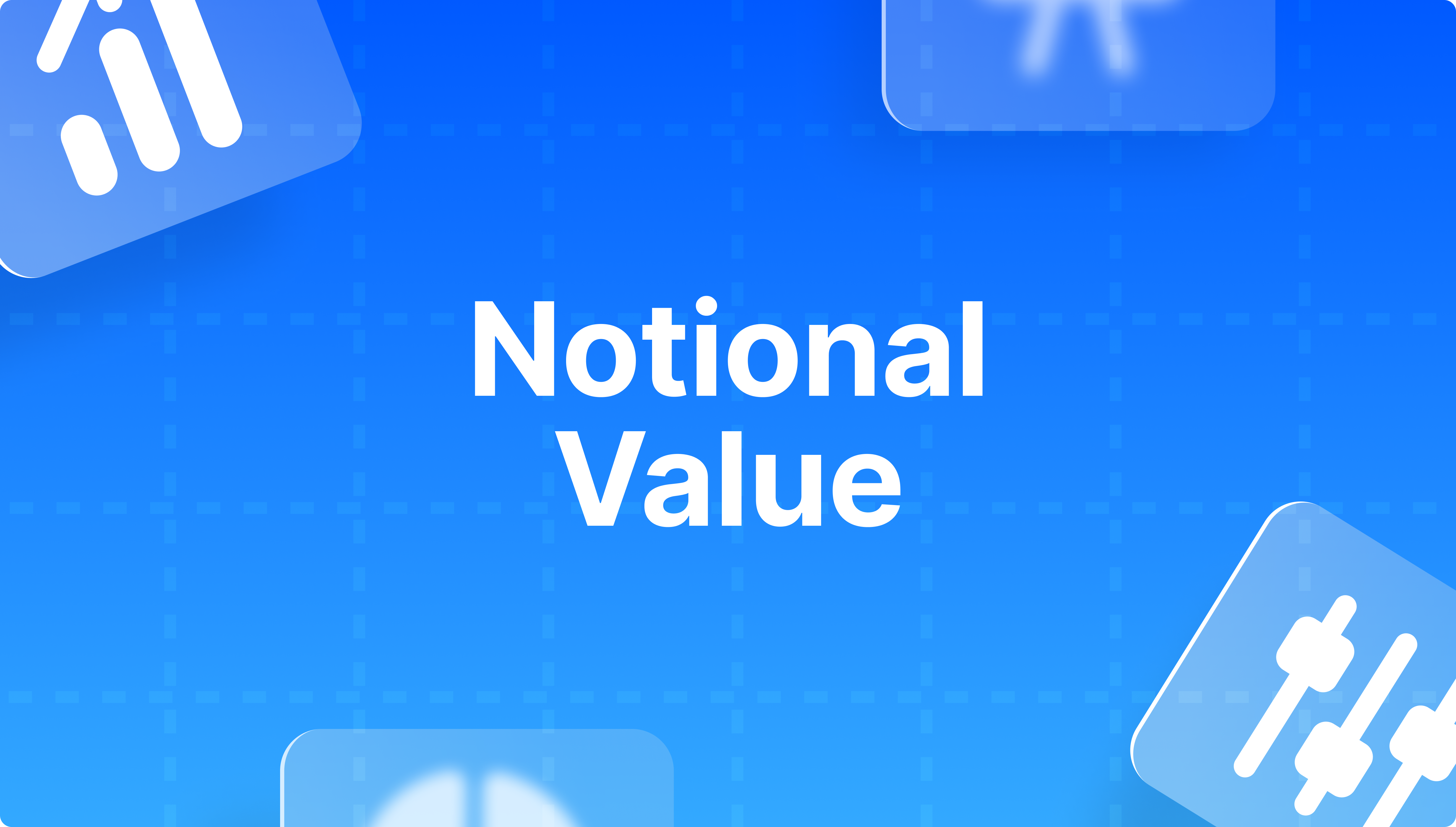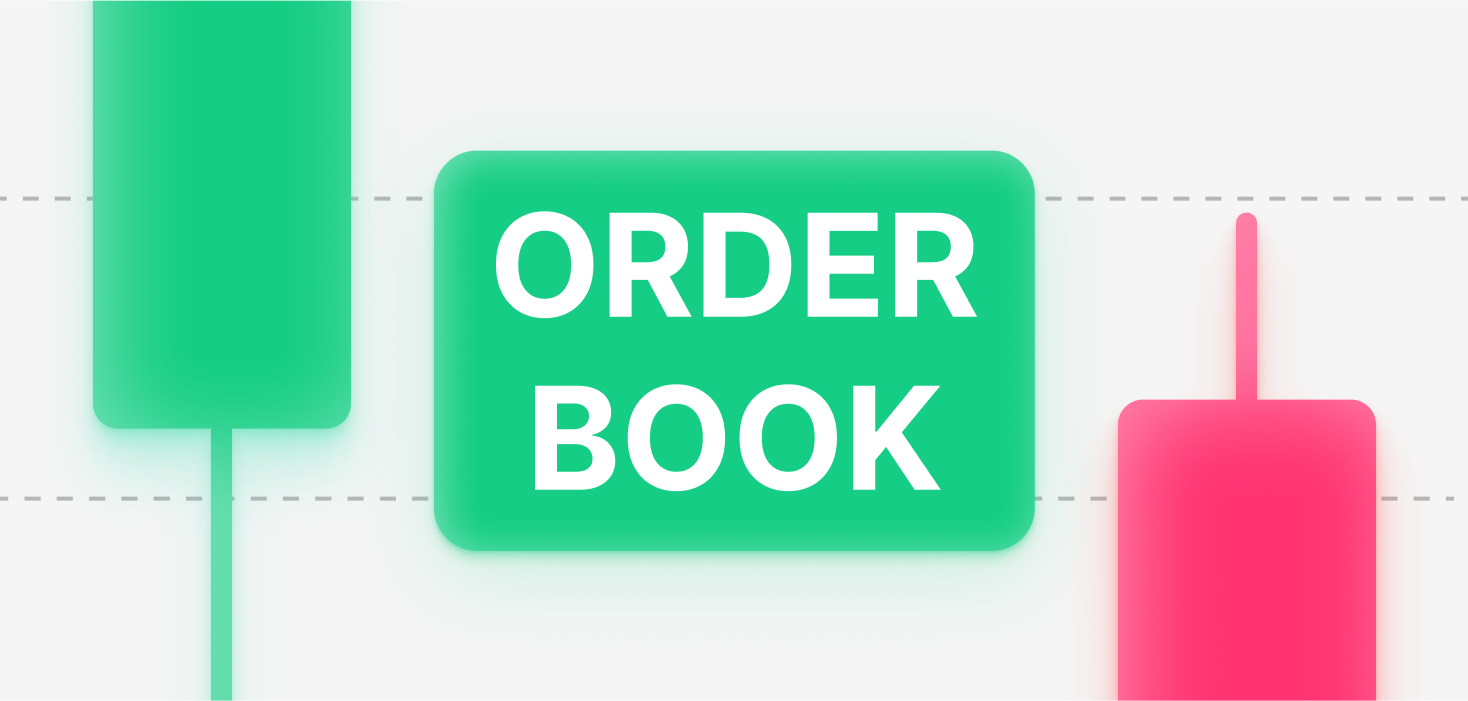White Label Forex Business Startup Cost: What to Consider
Articles

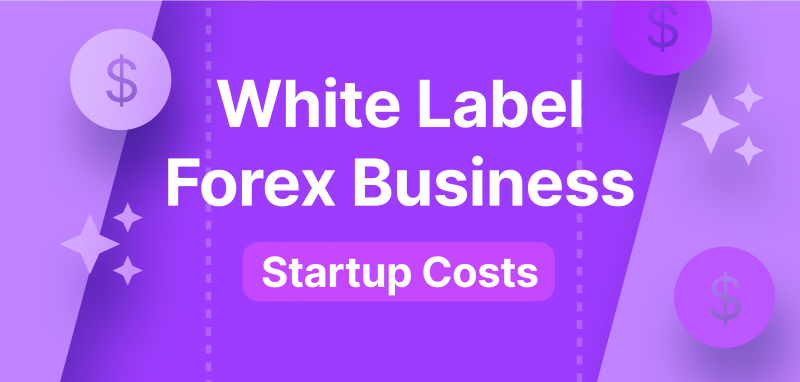
White Label business has become a real hit in the FX area, offering the opportunity to gain professional expertise in trading currency pairs and worthwhile knowledge in interacting with such solutions.
At the same time, more and more enterprises on the market today want to launch their own project focused on providing services in different segments of FX. Forex business startup cost is the first thing considered in this case.
In this article, you will learn about the Forex white labelling model and how it works. You will also learn about some advantages and disadvantages of this model and its variations. Ultimately, we will tell you how much the Forex white label cost is to plan your budget accordingly.
Key Takeaways
- White Label Forex system offers a versatile way to quickly enter the market while saving financial, time and human resources.
- Accounting for the Forex business startup cost involves a number of elements, chief among which is infrastructure and technology tooling.
What is Forex White Labelling?
The white label model used in the Forex market is a multifunctional tool elaborated to greatly simplify the interaction of new market participants with different products that provide practical work with solutions that give access to various market segments.
Such solutions include trading platforms and terminals, crypto storage in the form of wallets and crypto gateways for making payments, CRM systems for working with the client base, and affiliate management systems (AMS) for developing marketing campaigns and brand promotion strategies.
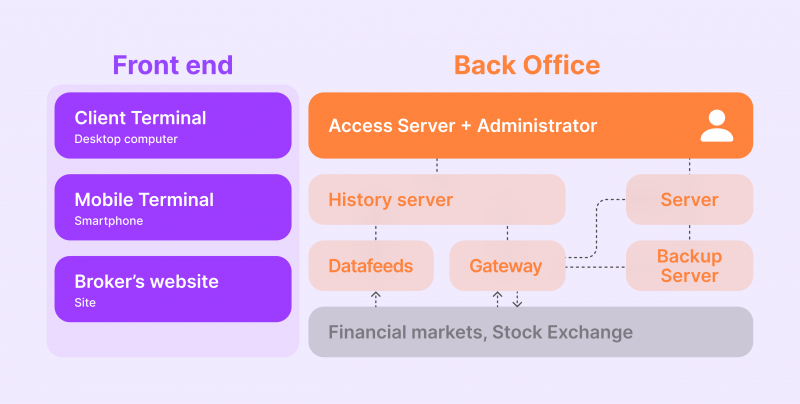
White label solution Forex contains a set of services and systems that ensure its stable and proper functioning within the framework of practical use in the business processes of another firm to allow it to utilise all the strengths of this model fully. As a rule, this set is a ready-made infrastructure combining two main components — front end and back office.
The first is responsible for the user interface’s external elements, with direct interaction. The second provides access to system parameters that function in the background and represent the solution’s technical (software) part.
White labelling is one of the most popular business models within the forex niche, allowing you to realise the concept of using one company’s products in the work of another.
Advantages and Disadvantages of Forex White Label
The white label model in the FX industry has gained popularity due to its ideal combination of technology, efficiency and cost, creating a great demand for solutions that work according to this scheme.
Like any other concept, the Forex WL model has advantages and disadvantages, as well as certain peculiarities of operation, which should be considered before launching your project.
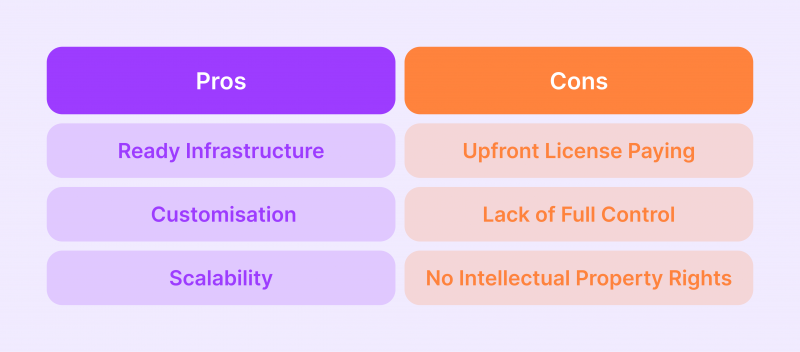
Strengths of Forex White Label Model
Foremost, let’s dwell on the major positive sides that each white label Forex solution possesses.
1. Ready Infrastructure
Any white label solution is an infrastructure ready to work under certain conditions, consisting of various dependent elements, which provide for the fulfilment of one or another function within a particular process. This allows you to start utilising the solution to achieve the required results without spending too much time and money.
2. Customisation
White label customisation allows Forex brokers to use their imagination to create a unique product that meets the company’s standards and presentation. In most solutions, whether a White label trading platform or a CRM system, it is possible to customise each available parameter to achieve the perfect balance between performance and visual design.
3. Scalability
The scalability of FX white label products is the property of the infrastructure to undergo changes in the design of internal systems and elements, as well as their adaptation to work in new conditions, for example, interacting with third-party services designed to expand their capabilities, an efficiency that directly affects the overall efficiency of the use of WL software.
Weaknesses of Forex shite Labelling Model
Now, let’s look at a few drawbacks inherent to WL products used in the FX realm.
1. Upfront License Paying
In the context of this disadvantage, a license is a digital permission that gives the right to use a product or service within a particular company and then sell it to end users. Regardless of the type of solution and its purpose, as a rule, a license granting the right to use it within the WL model for subsequent resale has a high cost, which must be paid immediately.
2. Lack of Full Control
Every Forex brokerage business that develops WL projects faces the problem of not having full control over the solution realised for end users based on another product.
So, for example, if the developer company changes any features or functions of the product, the company using it for sale on the WL business model will not be able to influence its modification or change according to its preferences.
3. No Intellectual Property Rights
One major drawback of using white-label software is that the resellers do not have ownership over the intellectual property rights of the products they are selling. This can make it challenging for smaller companies to compete with larger corporations with more resources and the ability to launch their own products.
Smaller companies may not have their own in-house development team or marketing department and, therefore, rely on outsourcing to other companies for assistance.
Full and Partial White Label Forex Solution – What is Better?
Using the full white label model, it’s possible to configure the spreads and commissions of customers’ transactions, manage account openings, and have third-party payment channels for customers to make deposits and withdrawals.
Any product, including trading platforms, can be branded with the firm’s logo. The main difference between full and partial white-label models is that the former can directly manage the client’s funds. In this case, transferring it to the broker who provides the white label service is necessary.
In a partial white label model, it offers its services to the trading firm without providing regulatory registration. On the other hand, the full white label model provides regulatory registration, a platform, and stable quote systems for trading firms.
These quote systems include online quotes for gold, foreign exchange, crude oil, indices, stocks, and market channels. The full WL model also offers training in various departments, such as back-office, customer service, and market development, coupled with the daily workflows of regular traders.
Calculating The Forex Business Startup Cost
Before launching a white label Forex business, every FX brokerage house thinks about the cost of developing such a solution, plans the appropriate budget, and analyses the feasibility of its implementation.
Many elements make up a Forex business startup cost, each of which requires careful calculation to establish the budget necessary for a full-fledged launch. Let’s estimate the Forex white label cost:
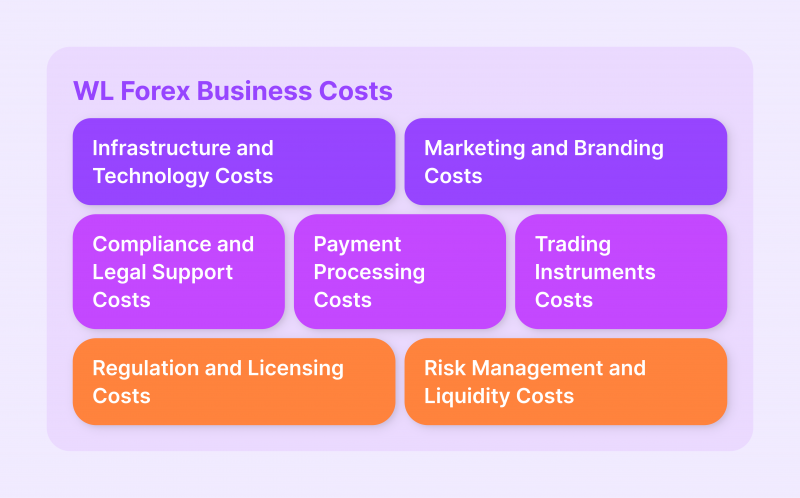
Infrastructure and Technology Costs
The beginning of Forex white label brokerage is always related to its infrastructure and technological component, such as a trading platform. Their quality will determine the reliability of all elements of the solution.
The price of technology depends on whether a ready-made platform or a customised product tailored to the needs of the white label Forex brokerage house is purchased.
Regulation and Licensing Costs
This component of Forex business startup cost includes the fees of regulatory and legal documents that give developers the right to use the solutions to implement them under the white label model.
In this case, Forex white label cost depends on the type of product used, i.e. its intended purpose. The price may also depend on the company itself, as better-known brands always have higher prices for their goods and services.
Marketing and Branding Costs
Marketing and branding play an important role in Forex, and therefore, it will take a decent portion of your Forex white label cost. In order to create a successful Forex broker company for sale based on the white label model, it is necessary to take care of its further promotion, which includes many different methods.
Risk Management and Liquidity Costs
This cost item will include activities aimed at finding and connecting sources of liquidity to ensure a smooth Forex trading process on the platform. Best Forex white label solutions have a reliable supply of liquidity from different companies, as well as modern risk management tools to ensure safety in case of unforeseen market situations.
Compliance and Legal Support Costs
When creating, for example, a white label Forex exchange, it is necessary to enlist the support of legal experts to ensure compliance with all existing legislative documents regulating Forex activity. This aspect is of a special nature, as Forex is one of the most heavily regulated areas in the world.
Payment Processing Costs
Payment processing is an integral part of any financial service, so to create the best white label Forex broker or any other solution on the market, you will need to find and connect a reliable processing tool for the platform.
Trading Instruments Costs
This item includes the cost of connecting capital markets to the platform to offer potential users access to trade. Most forex brokers today offer access not only to the FX market but also to CFDs, derivatives, etc., so the more markets connected in the process, the higher the price of the final product.
Overall, White-label forex brokerage setup costs might range from $35,000 to $100,000. The result (full or partial) depends on your chosen WL model. It is much more affordable than the $500,000 needed to build an FX brokerage from scratch. This major factor makes newbies lean towards working with trustworthy white-label providers.
Conclusion
Forex business startup cost comprises accounting and budget planning for the many elements that make up a complete solution. The use of modern technology in this area makes it possible for it to take its rightful place among the dominant companies in the field of WL products.













